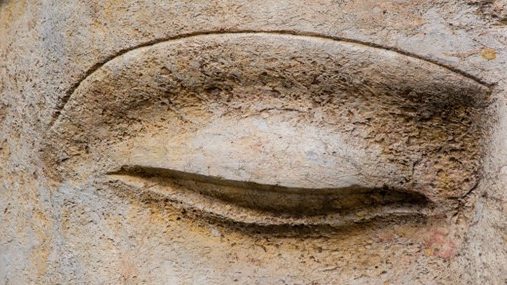Step into Sarnath, a magical place where history whispers its secrets and spirituality fills the air like a gentle breeze. Here, ancient structures like the Dhamek Stupa, are adorned with tales of Buddha’s life, and the serene Thai Temple echoes with devotion. Amidst this peaceful atmosphere, monks and pilgrims carry on traditions of kindness and tranquility, making Sarnath a haven for those seeking inner peace and wisdom. It’s a journey not just through time, but through the depths of the human spirit and consciousness, where every corner holds a story, and every moment holds a chance for enlightenment.

Sarnath, a place of profound significance in Buddhism, lies in the serene landscape of India. Revered as the birthplace of Buddha’s teachings, this ancient site continues to spark spiritual reverence and academic curiosity alike. Let us learn about its rich heritage and timeless wisdom which once was the epitome of craftsmanship and faith.
A Glimpse into History:
Centuries ago, Sarnath witnessed the dawn of a spiritual revolution as Siddhartha Gautama, the enlightened one, delivered his first sermon. Thus, he set the wheel of Dharma into motion. This significant moment marked the birth of Buddhism, a path that would spread across continents and through the ages of time.
Architectural Marvels:
As we explore the sacred soil of Sarnath, we are greeted by architectural marvels that stand as testaments to its glorious past. Let us explore some of them:
Dhamek Stupa: Stands tall majestically at Sarnath and serves as a testament to Sarnath’s significance in Buddhist history. Built by Emperor Ashoka in the 3rd century BCE, this cylindrical tower rises to a height of 43.6 meters and is adorned with intricate carvings which depicts the scenes from Buddha’s life. It is constructed of red bricks and stone, and spreads a sense of permanence and tranquility, attracting visitors to contemplate the teachings of the Buddha.
Chaukhandi Stupa: Set on a small hill near the plains of Sarnath, the Chaukhandi Stupa is one of the oldest monuments in the region. It marks the spot where Buddha met his first disciples, the stupa underwent several renovations over the centuries, resulting in its current octagonal shape. Though simpler in design, the Chaukhandi Stupa radiates a quiet elegance and celebrates Buddha’s Legacy.
Ashoka Lion Capital: It is a symbol of India’s ancient heritage and the spread of Buddhism across the subcontinent. Set on the magnificent Dhamek Stupa, this remarkable sculpture boasts the enduring legacy of Emperor Ashoka and his profound impact on the development of Buddhism. The Ashoka Lion Capital is adorned with profound symbolism. It reflects Ashoka’s commitment to the principles of Buddhism and his desire to promote peace and harmony throughout his empire. The four lions, with their detailed expressions and majestic posture, represent strength, courage, and righteousness, while the Ashoka Chakra embodies the eternal truth of the Buddha’s teachings. Together, these elements spread the message of compassion, tolerance, and moral integrity.
Thai Temple: A symbol of the enduring ties between India and Thailand, the Thai Temple in Sarnath is a striking example of Thai architecture. Built in traditional Thai style with beautiful carvings and gilded spires, the temple is dedicated to the worship of Buddha and serves as a center for Thai Buddhist monks studying in India. The interior walls are decorated with exquisite murals depicting scenes from the life of Buddha, while outside, the tranquil gardens provide a serene setting for meditation and prayer.
A Living Legacy:
Beyond its historical grandeur, Sarnath possesses a living legacy, nurtured by generations of monks and devotees who continue to practice the teachings of compassion and mindfulness. The rhythmic chants of sutras resonate through the air. Monks wearing saffron robes move gracefully, spreading the spirit of detachment and inner peace taught by Lord Buddha.
Cultural Amalgamation:
Sarnath stands as a testament to the harmonious amalgamation of diverse cultures that have shaped its identity over the centuries. From the intricate Gupta-era sculptures depicting scenes from the life of Buddha to the vibrant Tibetan thangkas adorning monastery walls, each element speaks of a vibrant world of faith, art, and philosophy.
A Special Place for Seekers:
In the hustle and bustle of modern life, Sarnath serves as a special place for seekers, offering solace to weary souls and a beacon of hope in a world of conflicts and evils. Pilgrims from across the globe are drawn by an inner calling to connect with the timeless wisdom that infuses every stone and scripture of this place.
Thus, in the heart of Sarnath, amidst the whispered prayers and ancient relics, lies a timeless truth—a reminder that the path to enlightenment begins with a single step, taken with humility, reverence, and an unwavering faith in the inherent goodness of humanity.
ARTICLE BY – GAUTTAM SHAH | EDITED BY – SAHIL HARVANI



